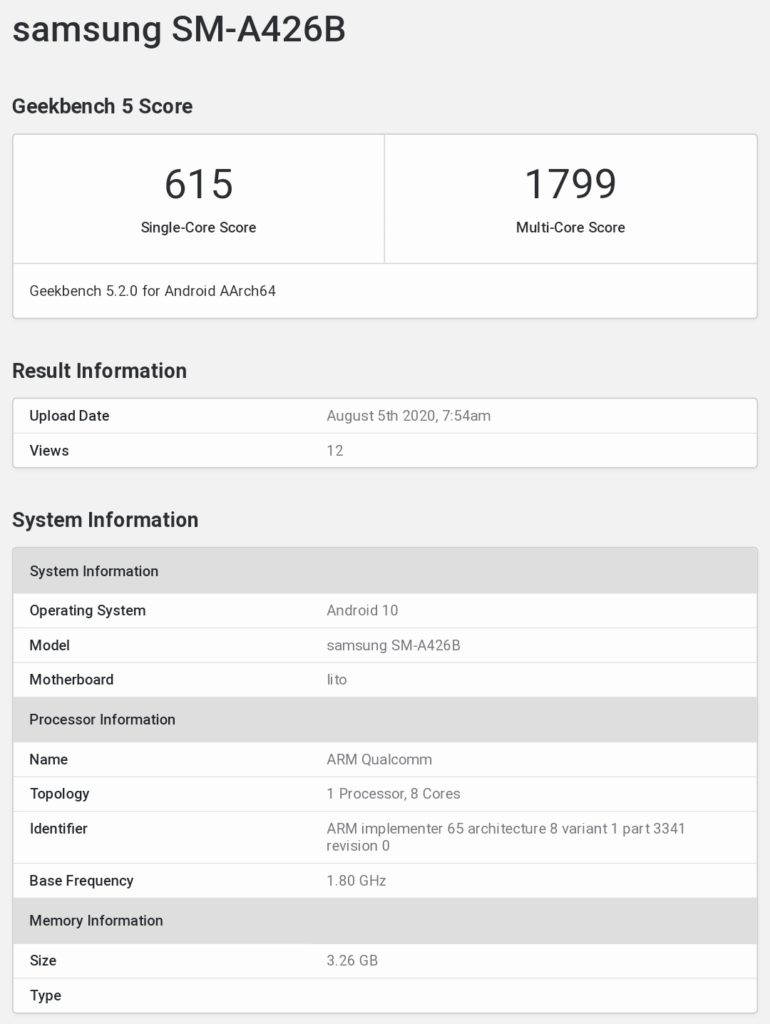Recent reports have revealed that Samsung is working on new mid-rangers named Galaxy A32 5G and Galaxy A42 5G. The A32 phone end up as the cheapest 5G phone from the South Korean company and the A42 5G could be priced slightly higher. Recently, Sammobile had revealed that the model number of Galaxy A42’s 5G variant is SM-A426B. It also revealed that the company will be selling its 4G edition in certain markets. The handset’s battery had recently received certification from China’s 3C authority. Today, the smartphone appeared on the Geekbench 5 benchmark tests. It appears that the phone could be driven by Snapdragon 690 chipset.
The presence of ‘lito’ codename in the Geekbench 5 listing of the Samsung Galaxy A42 5G suggests that it could be powered by the Snapdragon 765G. However, a leakster has revealed that the GPU of the processor suggests that it could be fueled by the Snapdragon 690 5G chipset.

The 5G edition of the Galaxy A41 phone’s successor has 4 GB of RAM. The device is preloaded with Android 10 OS. It achieved 1799 score in the multi-core test of Geekbench and it scored 615 in the single-core test.
Recently, the 3C authority had approved a battery model number EB-BA426ABY. The certification revealed that the rated capacity of the battery is 4,860mAh. Its typical value could be 5,000mAh. The same battery has appeared in the database of South Korea’s SafetyKorea certification. It reiterates that the phone has a 5,000mAh battery.
Previous reports have revealed that the Galaxy A42 5G will be having an internal storage of 128 GB. It is likely to arrive in colors like black, white, and gray.